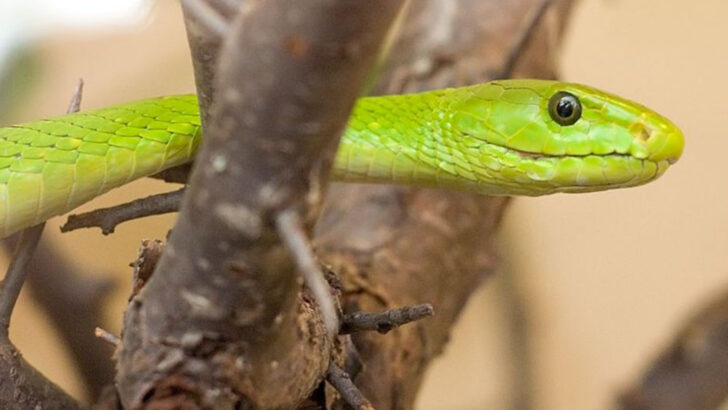One bite, and it’s game over.
Tropical jungles are home to some of the deadliest serpents on Earth—slithering shadows armed with venom so potent, it can stop a heart mid-beat.
These aren’t your average backyard snakes. We’re talking neurotoxins that paralyze, hemotoxins that liquefy, and fangs that strike faster than you can blink. And they do it all hidden under the lush canopy, camouflaged in the thick of the green.
From colorfully deceptive to terrifyingly aggressive, these 21 venomous wonders rule their jungle domains with silent precision. You’ll never look at tall grass the same way again.
King Cobra
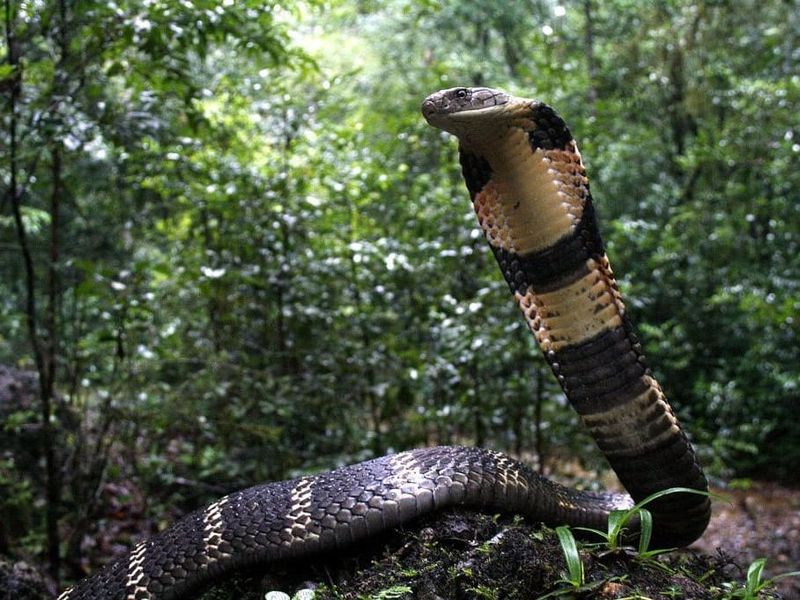
With an intimidating presence, the King Cobra reigns supreme in its jungle domain. Known for its impressive length, which can exceed 18 feet, this snake commands respect. Its hood, when expanded, reveals stunning patterns that warn intruders of its potent venom.
While generally reclusive, the King Cobra can become aggressive if threatened, delivering a neurotoxic bite capable of overpowering large prey. Its diet mainly consists of other snakes, showcasing its prowess as a top predator.
A fascinating fact: the King Cobra is the only snake species known to build nests for its eggs, exhibiting remarkable parental care.
Taipan

The Taipan boasts one of the most potent venoms of any snake, making it a formidable jungle inhabitant. Its sleek, muscular body moves with grace, allowing it to navigate the dense underbrush effortlessly. This deadly serpent’s venom disrupts blood clotting, causing severe internal bleeding.
Despite its fearsome reputation, the Taipan is shy and prefers to avoid human encounters. When it feels cornered, it strikes with lightning speed, injecting venom that can be fatal.
Interestingly, the Taipan’s venom has been the subject of extensive medical research, leading to the development of lifesaving antivenoms.
Bushmaster
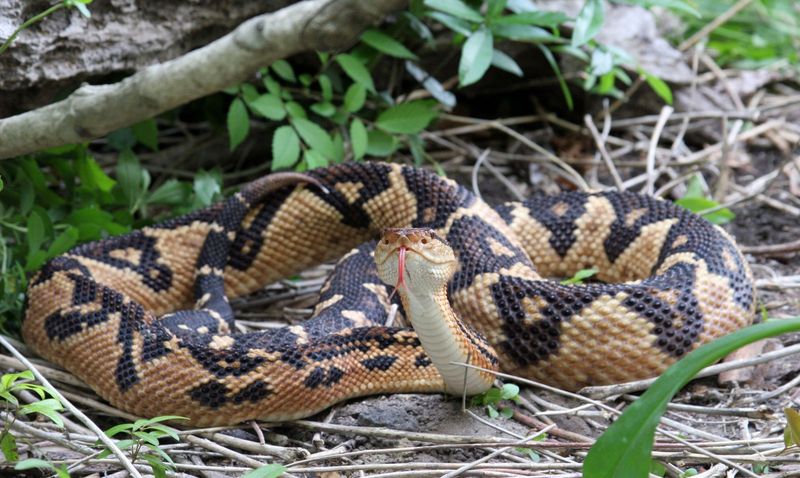
Silent and elusive, the Bushmaster prowls the jungle floor, its heavily camouflaged scales blending seamlessly with the forest surroundings. As the largest pit viper, it possesses a potent hemotoxic venom that incapacitates its prey.
The Bushmaster is primarily nocturnal, using its heat-sensing pits to locate warm-blooded prey in the darkness. Its bite can cause intense pain and tissue damage, making it a snake to be wary of.
Despite its size, the Bushmaster is rarely seen, as it prefers the solitude of the jungle’s depths, adding to its mysterious allure.
Fer-de-Lance
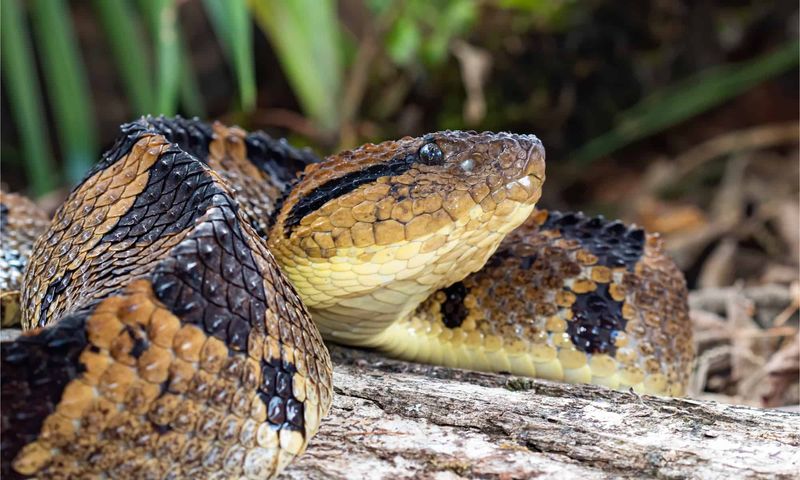
The Fer-de-Lance, with its reputation for being aggressive, is a formidable presence in the tropical jungles of Central and South America. Its venom is hemotoxic, causing extensive tissue damage and pain.
This snake’s striking triangular head and distinctive patterns make it instantly recognizable. It often lies hidden among the leaf litter, waiting for unsuspecting prey to pass by.
In some cultures, the Fer-de-Lance is considered a symbol of danger, and encounters can be perilous. Its ability to deliver large quantities of venom makes it one of the jungle’s most feared inhabitants.
Black Mamba
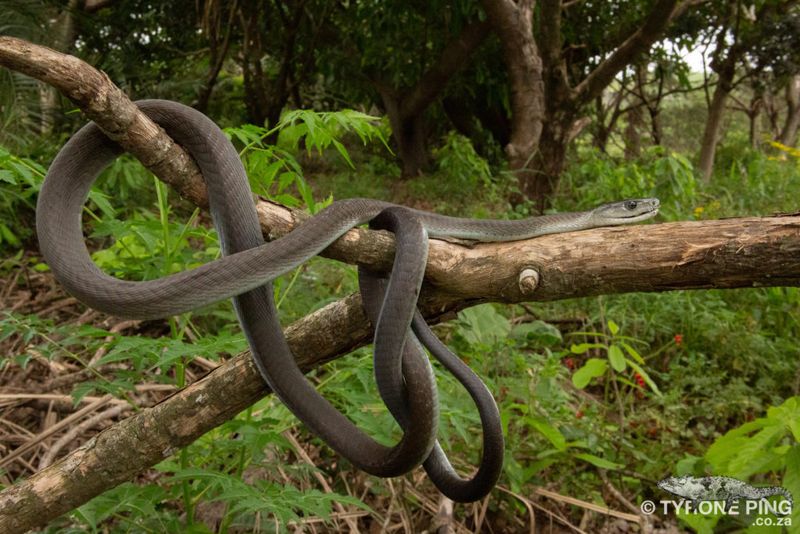
The Black Mamba is a legend in the snake world, known for its speed and potent venom. This snake’s slender body allows it to move swiftly, covering large distances in search of prey and shelter.
Its venom is a potent neurotoxin that can cause rapid paralysis and respiratory failure. The Black Mamba’s name comes from the dark, inky color inside its mouth, which it displays when threatened.
Despite its fearsome reputation, the Black Mamba is mainly shy and avoids confrontation. However, when provoked, it can be highly aggressive and will defend itself vigorously.
Eastern Coral Snake

With its vivid coloration, the Eastern Coral Snake stands out as a gem of the jungle. Its striking red, yellow, and black bands serve as a warning to potential predators of its potent neurotoxic venom.
This elusive snake prefers to spend its time hidden under leaf litter or burrowed in the ground. It is reclusive by nature, but when threatened, its bite can be life-threatening.
A fun fact: the rhyme “Red touches yellow, kill a fellow; red touches black, venom lack” helps distinguish it from non-venomous lookalikes, underscoring the importance of caution.
Gaboon Viper
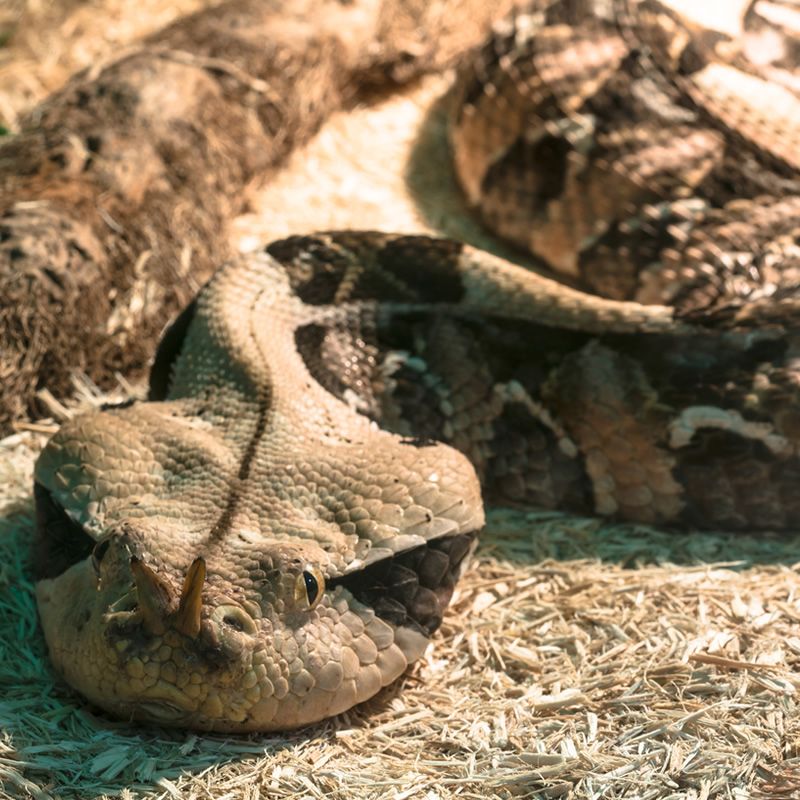
The Gaboon Viper is a master of disguise, with its complex patterns providing perfect camouflage among the fallen leaves. Known for having the longest fangs of any snake, it delivers a powerful hemotoxic bite.
This snake’s slow, deliberate movements and preference for ambush hunting make it a fascinating predator. Its venom causes severe pain and swelling, posing a significant threat to those who venture too close.
Despite its fearsome appearance, the Gaboon Viper is generally docile and prefers to remain hidden rather than confront potential threats head-on.
Inland Taipan
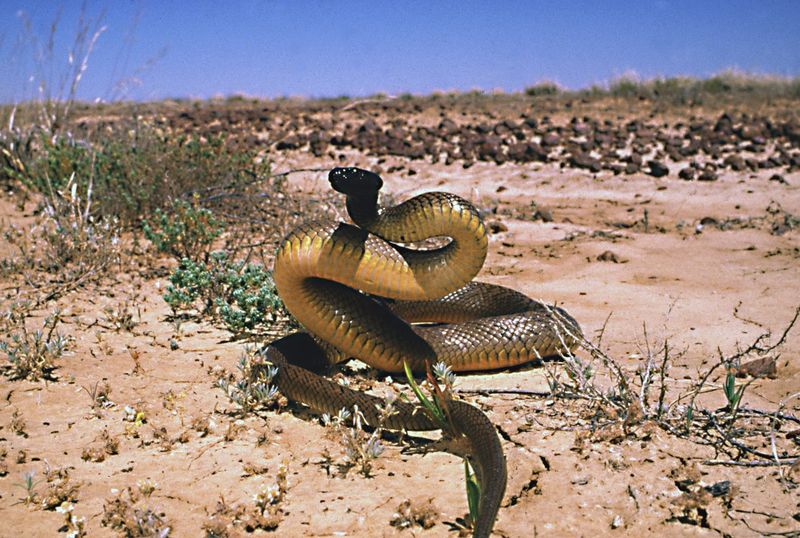
The Inland Taipan, often called the “fierce snake,” holds the title of the world’s most venomous snake. Its venom is a cocktail of neurotoxins that can incapacitate prey rapidly, making it highly effective.
Despite its deadly potential, the Inland Taipan is rarely encountered by humans due to its remote habitat. It is a reclusive creature that prefers solitude.
Interestingly, this snake’s venom is specifically adapted to its preferred prey, small mammals, and it has evolved to deliver precise, controlled strikes to minimize energy expenditure during hunts.
Rattlesnake
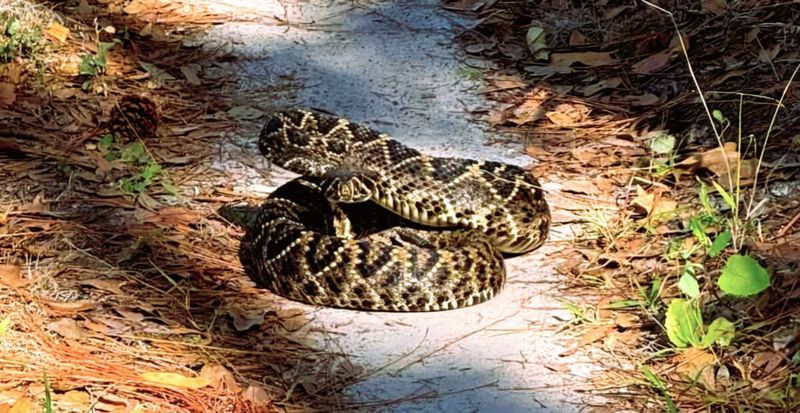
The distinctive rattle of the Rattlesnake serves as a warning to those who dare approach its domain. Known for its defensive nature, this snake can deliver a hemotoxic bite that disrupts blood flow and causes tissue damage.
Rattlesnakes are often found in the transitional areas between jungles and more arid landscapes. Their signature rattle is a modified scale that vibrates to create a sound that deters predators and threatens intruders.
A fascinating fact: Rattlesnakes can control the intensity of their rattle, using it to communicate different levels of threat based on the situation.
Boomslang

The Boomslang is an arboreal specialist, spending much of its life navigating the treetops of the jungle. Its bright green coloration provides excellent camouflage among the leaves.
This snake’s venom is hemotoxic, affecting blood clotting and leading to internal bleeding. Despite its potent venom, the Boomslang is generally not aggressive and prefers to escape rather than confront threats.
Interestingly, the Boomslang’s eyes are exceptionally large, giving it excellent vision for spotting prey from high vantage points. This visual acuity is vital for its survival in the dense jungle canopy.
Cantil
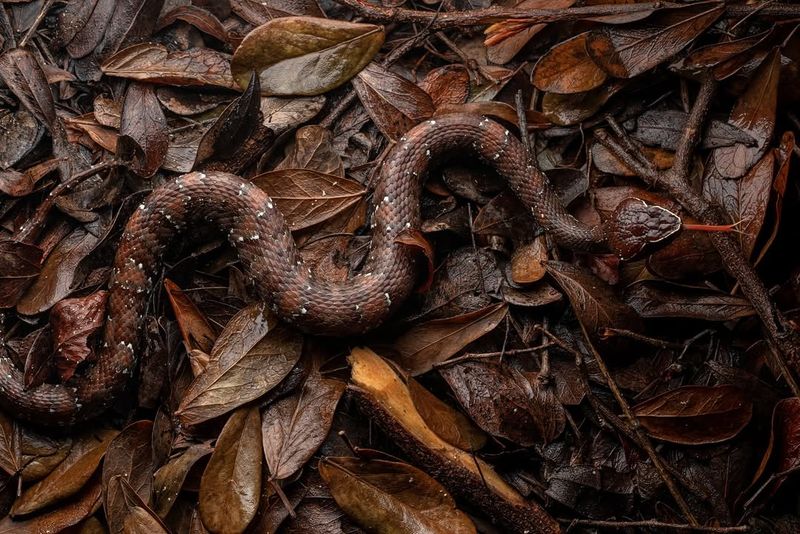
The Cantil snake, with its dark body and striking orange markings, is a distinctive jungle resident. Its venom is hemotoxic, causing pain and tissue damage to its prey.
Found in Central and South American jungles, the Cantil is a stealthy predator that relies on surprise to catch its prey. It prefers humid environments where it can remain hidden among the dense foliage.
Cantil snakes are known for their striking behavior, where they raise their heads and expose their fangs when threatened, a display both intimidating and mesmerizing to observe.
Eyelash Viper
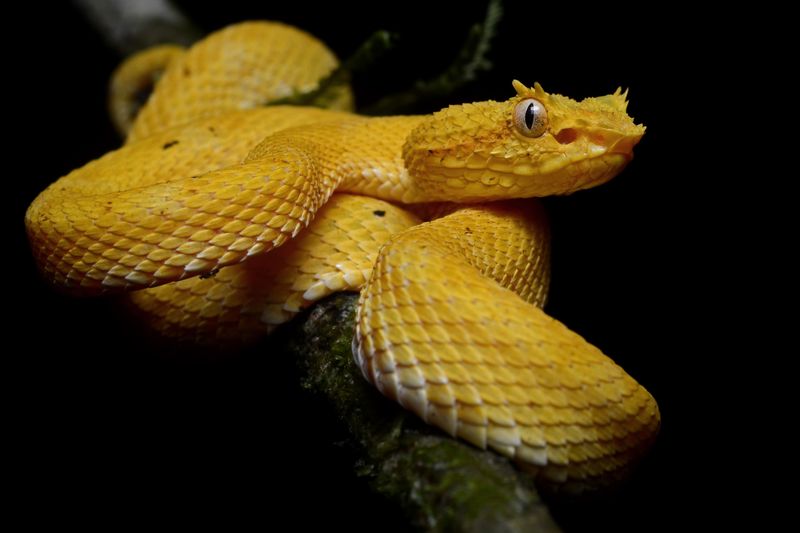
The Eyelash Viper is a small but striking snake, known for the unique scales above its eyes that resemble eyelashes. This vivid yellow snake is an expert at ambush hunting, often lying in wait on tree branches.
Its venom is hemotoxic, causing pain and swelling. Despite its size, the Eyelash Viper is highly effective at capturing small birds and frogs.
Eyelash Vipers are often found in the rainforests of Central and South America. Their beauty and unusual appearance have made them a favorite subject for wildlife photographers, capturing the imagination of many.
Tiger Snake

Named for its striking banded appearance, the Tiger Snake is a formidable predator found in the jungles of Australia. Its venom is potent, capable of causing paralysis and respiratory failure.
Tiger Snakes are adaptable, thriving in a range of environments, from coastal areas to dense forests. They are often seen basking in the sun near water sources, where they hunt for frogs and small mammals.
Despite their intimidating appearance, Tiger Snakes are generally shy, preferring to retreat rather than confront humans. Their vivid patterns serve as a warning to potential threats.
Philippine Cobra
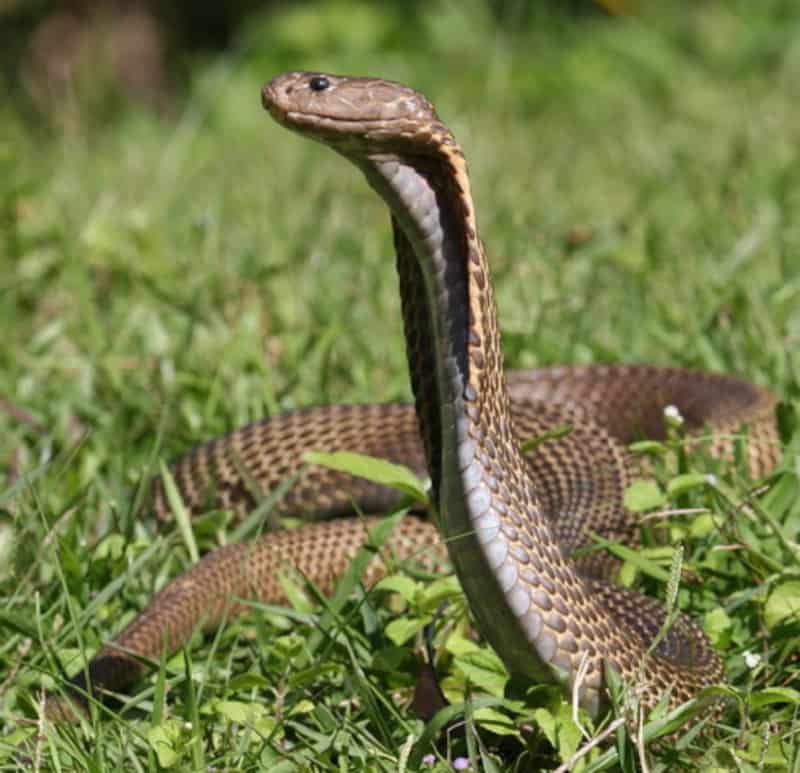
The Philippine Cobra is renowned for its ability to spit venom with remarkable accuracy, a defense mechanism that deters potential threats. This snake’s venom is primarily neurotoxic, causing paralysis and respiratory distress.
Found in the jungles of the Philippines, it is a shy and elusive creature, rarely seen by humans unless provoked. Its hood, when expanded, displays striking patterns that serve as a warning.
A captivating aspect of the Philippine Cobra is its specialized venom delivery system, which has fascinated herpetologists and contributed to antivenom development efforts.
Malayan Krait
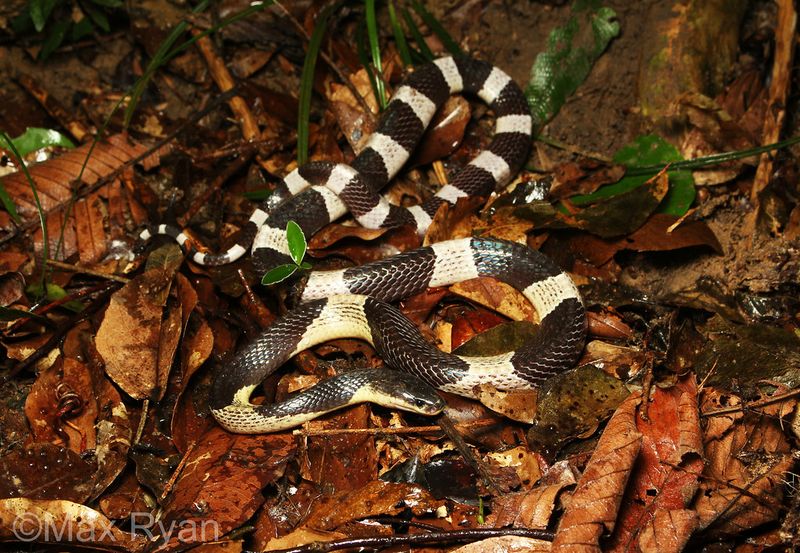
The Malayan Krait is a nocturnal hunter, often found in the jungles of Southeast Asia. Its glossy black-and-white bands provide a striking contrast in the dim jungle light.
This snake’s venom is neurotoxic, causing paralysis and potentially life-threatening respiratory failure. Despite its potent venom, the Malayan Krait is rarely aggressive and prefers to avoid confrontation.
An interesting note: the Malayan Krait is known for its cannibalistic tendencies, often preying on other snakes, including its kind. This behavior underscores its role as a top predator in its ecosystem.
Green Mamba
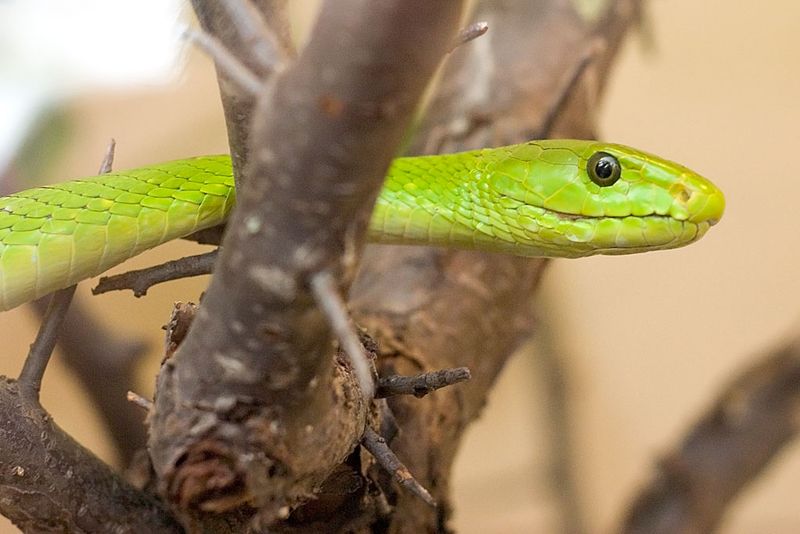
The Green Mamba is an arboreal snake, spending much of its life in the trees of African jungles. Its brilliant green scales provide perfect camouflage among the foliage.
Known for its agility, the Green Mamba can move swiftly through the treetops. Its venom is a potent neurotoxin, affecting the nervous system and posing a serious threat.
Interestingly, the Green Mamba is more reclusive than its infamous relative, the Black Mamba. It avoids human settlements, preferring the relative safety of the jungle canopy where it hunts for birds and small mammals.
Banded Sea Krait

The Banded Sea Krait is a snake of dual habitats, often found in the coastal jungles and surrounding waters of Southeast Asia. Its striking black and white bands make it easily recognizable.
This snake’s venom is highly potent, but it poses little threat to humans due to its shy nature. The Banded Sea Krait is an adept swimmer, often seen hunting for eels and small fish.
A fascinating trait is its ability to absorb oxygen through its skin, allowing it to remain submerged for extended periods, a remarkable adaptation for its aquatic lifestyle.
Saw-Scaled Viper
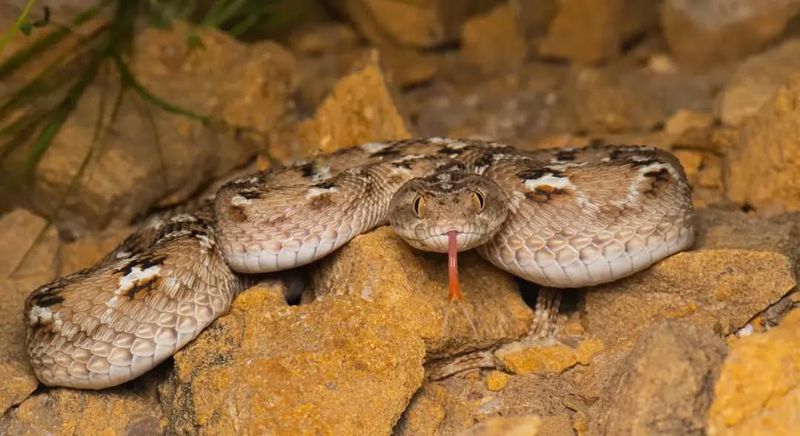
The Saw-Scaled Viper, though small, is notorious for its aggressive nature and potent hemotoxic venom. Its rough, keeled scales produce a distinctive sound when rubbed together, warning potential threats.
Found in the dry, arid regions on the edges of tropical jungles, this snake’s camouflage makes it nearly invisible among the sand and rocks. It relies on stealth to ambush prey.
Interestingly, the Saw-Scaled Viper is responsible for more bites than any other snake species, highlighting its prevalence and the risk it poses to those who venture too close.
Pit Viper
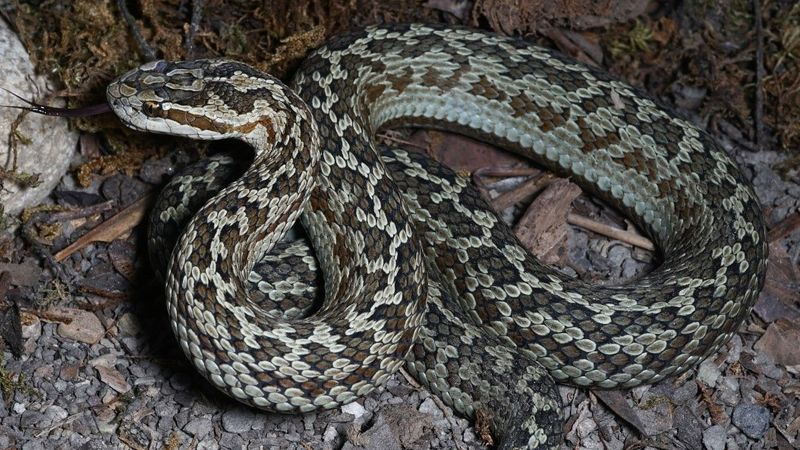
Pit Vipers are a diverse group of snakes, known for their heat-sensing pits that allow them to detect warm-blooded prey. These snakes are common in the jungles of Central and South America.
Their venom is hemotoxic, causing pain and swelling. Pit Vipers are often seen coiled around tree branches, waiting patiently for prey to pass by below.
A fascinating aspect of Pit Vipers is their ability to strike with high precision, even in complete darkness, leveraging their advanced sensory adaptations to succeed in their jungle habitats.
Russell’s Viper

Russell’s Viper is a highly venomous snake found in the jungles of India and Southeast Asia. Its venom is a complex mix of toxins, causing severe bleeding and organ damage.
This snake’s striking chain-like patterns and bold appearance make it easy to identify. Russell’s Vipers are often found in open areas, where they bask in the sun before hunting.
Despite its dangerous reputation, this snake plays an essential role in controlling rodent populations, highlighting the delicate balance of its ecosystem.
Blue-Lipped Jungle Serpent

Imagine a world where the vibrant colors of nature captivate the senses. The Blue-Lipped Jungle Serpent, with its electrifying azure lips and radiant scales, seems almost mythical. Its beauty is matched only by its deadly venom, a cocktail of neurotoxins that can paralyze in seconds.
This serpent is found slithering through the dense undergrowth of tropical jungles. Its agility and stealth make it a master hunter, often ambushing unsuspecting prey from above. Despite its lethal reputation, it’s a creature of incredible elegance and grace, embodying the perfect blend of beauty and danger.
Interestingly, locals have long believed that the serpent’s kiss, though fatal, leaves behind a mystical mark, a testament to its enchanting yet perilous allure. The Blue-Lipped Jungle Serpent’s legacy continues to intrigue and haunt the hearts of those who dare to cross its path. It’s a mesmerizing enigma of the jungle, both feared and revered.

